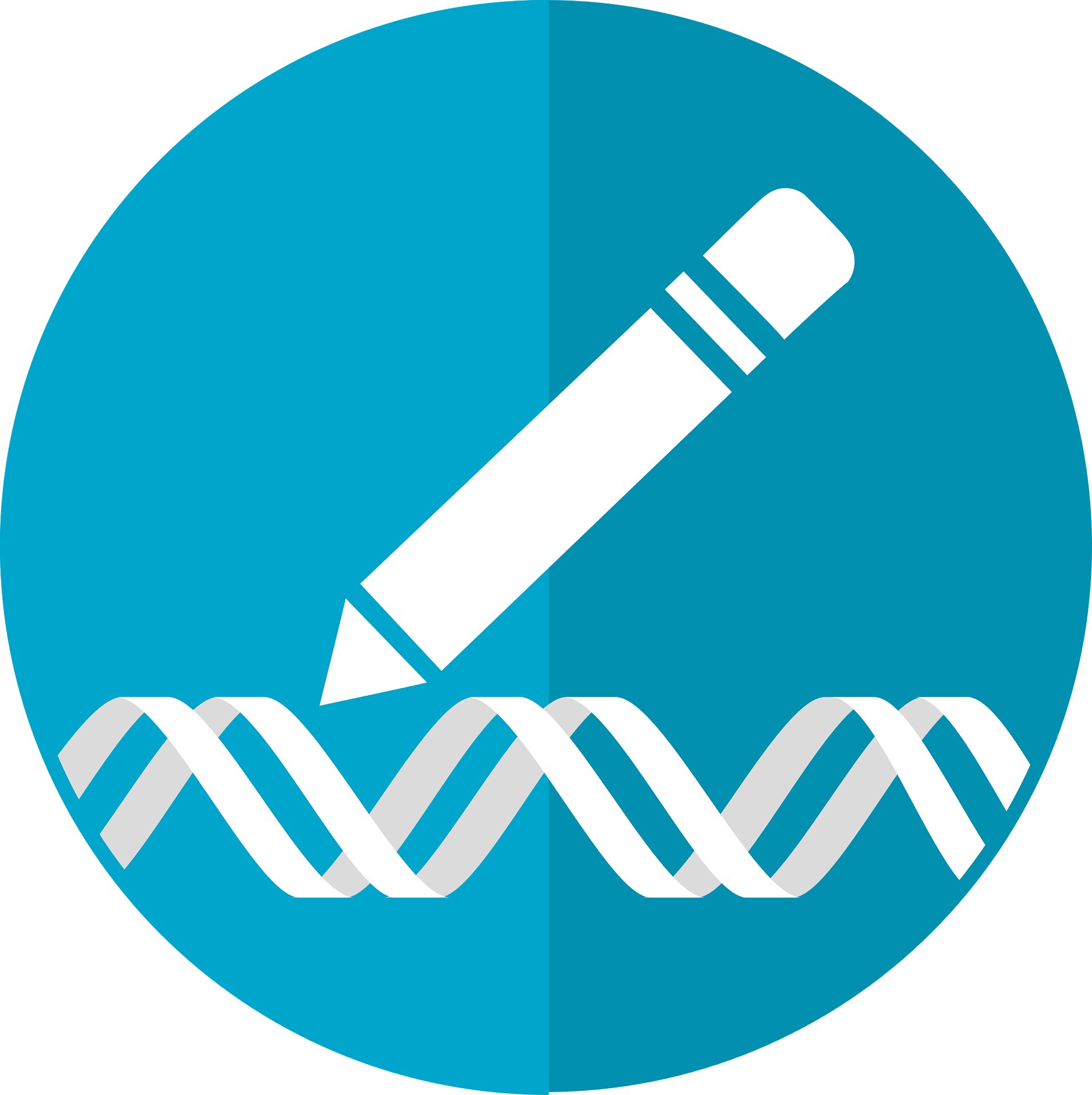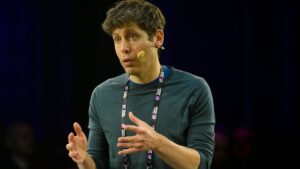

In 2007, Luciano Marraffini struck out on what was then a scientifically lonely path: to understand CRISPR, which had been discovered in bacteria only about a decade before.
Seventeen years later, we all know what CRISPR is: a revolution in medicine; a once-in-a-lifetime scientific breakthrough; the most promising tool for gene therapy ever discovered. But back then, “clustered regularly interspaced short palindromic repeats” were merely curious genetic fragments with no known purpose.
“When I started, there was nothing that indicated that it was going to one day help people to cure genetic diseases,” Marraffini recalls.
But intriguingly, one theory posited that CRISPR was part of the bacterial defense system, wielded by bacteria to fight off invasions by viruses (called phages) and foreign genetic fragments (called plasmids). Marraffini, then a postdoc at Northwestern University, was a specialist in pathogenic bacteria, studying how they invade us. In turning to CRISPR, he flipped that script, seeking to understand how they respond to being invaded themselves. If CRISPR were a weapon, he wanted to know how it was forged and brandished.
His conceptual pivot paid off: Within two years he’d publish groundbreaking findings on CRISPR, and in the process help pioneer the emerging field of genomic medicine.
CRISPR, it turns out, is a genetic scalpel that slices and dices invader DNA with remarkable precision. As breakthrough research by Marraffini and others has since shown, translating CRISPR-Cas9 (a protein essential to its functionality) to humans allows scientists to snip out not invader DNA but our own genetic mishaps, which cause disease.
These discoveries have borne fruit fast. Both the UK and the U.S. recently approved the first CRISPR-based gene therapy, for sickle cell disease, and more approvals are on the horizon. Most immediately, the go-ahead for treating the blood disease beta-thalassemia, which is linked to anemia and poor growth, is expected in spring 2024. Other CRISPR-based treatments are being evaluated for leukemia, esophageal, lung and cervical cancers, Huntington’s disease, and other serious conditions.
“I think it’s amazing,” says Marraffini, Rockefeller’s Kayden Family Professor. “Most scientists, especially in biomedical sciences, hope to have some positive impact on society. I feel very privileged to have done something that will help people.”
From finance to biotech
Marraffini first became compelled by science as a child in Rosario, Argentina, where futuristic fiction like “Blade Runner” sparked his imagination. Yet in high school he studied finance, a practical route that his parents, an architect and a teacher, encouraged.
But the prospect of a career in money management left him feeling uninspired, and at the University of Rosario, he switched to study biotechnology. It was the early ’90s, and recent breakthroughs in genetics fascinated him: In the space of just a few years, the Human Genome Project launched, the first rough map of all 23 pairs of human chromosomes was published, and the first federally-approved gene therapy treatment in the U.S. was successfully used for a 4-year-old girl with an immune disorder.
After Marraffini graduated, the agribiotech company Monsanto came calling, and he worked there for a couple of years, attempting to accelerate plant breeding through genetics. But that too felt unfulfilling.
“I wanted to be able to play with some organisms—to do science in a way where you don’t have too many limitations,” he recalls. “If you work with plants, you have to wait a long time for them to grow. But bacteria grow very fast.”
That’s how he found himself a Ph.D. student in the University of Chicago lab of famed microbiologist Olaf Schneewind, where he studied how bacterial invaders employ proteins and enzymes to colonize our tissues, evade our immune systems, and produce illness-inducing toxins. It was there that CRISPR caught his attention.
Genetic clips
He took his research deeper in the Northwestern University lab of Erik Sontheimer, who was studying RNA interference (RNAi), a then-newly discovered cellular mechanism that uses a gene’s own DNA sequence to silence gene expression. (Several years before, Rockefeller’s Thomas Tuschl had shown that it was possible to employ RNAi in human cells.)
“The only thing RNAi has in common with CRISPR is that it uses small RNAs,” Marraffini says. “That’s why I contacted Erik. He immediately saw the potential of CRISPR even though his lab had no expertise in it.”
Marraffini soon found a CRISPR system in Staphylococcal epidermidis, a common member of the human skin microbiome. There it was preventing plasmids from running amok. (Plasmids have a puzzling relationship with bacteria; they can be both harmful and beneficial.) It was confirmation that CRISPR was indeed part of the bacterial defense system. Next he had to find out how it was deployed.
Marraffini spent the next year tinkering with S. epidermidis, and in a 2008 paper revealed that CRISPR uses guide RNA to destroy the plasmid’s DNA. Thus disabled, these invaders can no longer replicate.
Other research revealed that the CRISPR also system stores genetic clips of the invader as so-called “spacers” in its own DNA so that if it encounters the same sequence in the future, it can activate an immune response. CRISPR would turn out to be a widely deployed defense system, found naturally in 40 percent of bacteria and virtually all single-cell organisms known as archaea.
But what about CRISPR’s potential for manipulating human DNA? In 2008, that seemed as sci-fi as the “Blade Runner” bioengineered replicants—and yet it wasn’t outside the realm of possibility, as Marraffini and Sontheimer cautiously noted in the groundbreaking paper.
“The ability to direct the specific, addressable destruction of DNA,” they wrote, “could have considerable functional utility, especially if the system can function outside of its native bacterial or archaeal context.”
From plasmids to people
Shortly after, in 2010, Marraffini came to Rockefeller and launched the Laboratory of Bacteriology, where he began testing whether a CRISPR system could indeed function outside of its native context. Inspired by Oswald Avery, the Rockefeller researcher who proved that DNA is the carrier of genetic material using a strain of Streptococcus pneumoniae, Marraffini clipped the CRISPR system—along with its all-important spotter protein, Cas9—from a related strain, Streptococcus pyogenes, and inserted it into S. pneumoniae, which lacked the defense system. It was within this modified organism that he first programmed Cas9 to spot and slice any DNA sequence they aimed it at.
In 2012, future Nobel Prize winners Jennifer Doudna and Emmanuelle Charpentier cleaved DNA with Cas9 in a test tube. A year later, in a seminal collaboration with Feng Zhang of the Broad Institute, Marraffini showed that it was possible to do the same in human cells. Researchers at other institutions—including Harvard’s George Church, who’d developed the first direct genomic sequencing method back in 1984—were reaching similar conclusions.
Since then, Marraffini has continued to make trailblazing discoveries about how various CRISPR-Cas systems work, sometimes in collaboration with other Rockefeller labs. Six types and 19 subtypes have been discovered. Considering the extraordinary diversity of bacteria—and phages, which may outnumber bacterial species 10 to 1—more types are likely to be identified. Some of these systems snip phage or plasmid DNA, others RNA, and still others a combination. Some don’t directly attack the invader but instead induce a kamikaze mission that takes down the cell and the phage along with it, as Marraffini’s lab recently discovered happens in one variation.
His lab is also working on the discovery and characterization of novel anti-phage defense systems—non-CRISPR fortifications in the bacterial battlement. Just as CRISPR has, these as-yet undiscovered mechanisms may one day yield new tools and treatments.
Beyond the lab
Marraffini is also a co-founder of and advisor to two companies that are directly developing CRISPR-Cas therapies to treat a variety of diseases. Intellia Therapeutics has projects in the pipeline for liver disease, lung disease, and two clotting diseases (Hemophilia A and B). Treatments for two rare genetic disorders—transthyretin amyloidosis, characterized by a buildup of a liver-generated protein, and hereditary angioedema, which causes recurring episodes of severe swelling—are both in clinical trials.
Eligo, on the other hand, seeks to turn the bacterial defense system against itself—or at least against other bacteria. “The objective is to use CRISPR to treat bacterial infections,” he describes. “In the same way CRISPR can kill a phage, you can program it to kill a bacterium. It’s not easy to do, technologically speaking, but that’s what we’re aiming for.”
The brave new world of gene editing has turned out to be not so sci-fi after all. It’s just science. “We’ve succeeded in programming this natural system so well that we’ve been able to put it into clinical use astonishingly fast,” Marraffini says. “The CRISPR story is really a testament to the importance of basic research.”
Provided by
Rockefeller University
Citation:
A CRISPR pioneer looks back as the first gene-editing therapy is approved (2023, December 14)
retrieved 14 December 2023
from https://phys.org/news/2023-12-crispr-gene-editing-therapy.html
This document is subject to copyright. Apart from any fair dealing for the purpose of private study or research, no
part may be reproduced without the written permission. The content is provided for information purposes only.
genshin impact promo codes free primogems for october 2021
Free ZEPETO Zems: Proven Strategies
pdf match masters unlimited coins generator v 109034
Are TikTok Coin Generators Worth It?
Legit Ways to Get Gems in Brawl Stars for Free
Free TikTok Coins: The Real Deal
Risques liés aux générateurs de pièces TikTok : La vérité
Your Ticket to Chat Domination: Free Coins in LivU Video Chat
Get Free Spins Today: Coin Master Tips and Tricks
Avakin Life Avacoins Hack: A Complete Overview
Free Credits in Bingo Blitz Today: Quick Tips
Coin Master Spins Myths and Facts: Unraveled
genshin impact june 2022 redeem codes free primos mora
ZEPETO Zems Myths and Facts: Unraveled
match masters guide tips tricks and strategies playoholic
Unlimited TikTok Coins: Myth or Reality?
Brawl Stars Gems Hack Myths Debunked
how to get more gems on dragon city for free md hugging face
unlimited cheat free family island rubies generator 2023 new
How to Get TikTok Coins Effortlessly
Free TikTok Coins: The Easiest Methods
Gagnez des pièces sur TikTok comme un pro
LivU Video Chat Free Coins Farming: Tips for Success
Unlocking Free Spins in Coin Master: Insider Secrets
Mastering Avacoins in Avakin Life: Expert Insights


